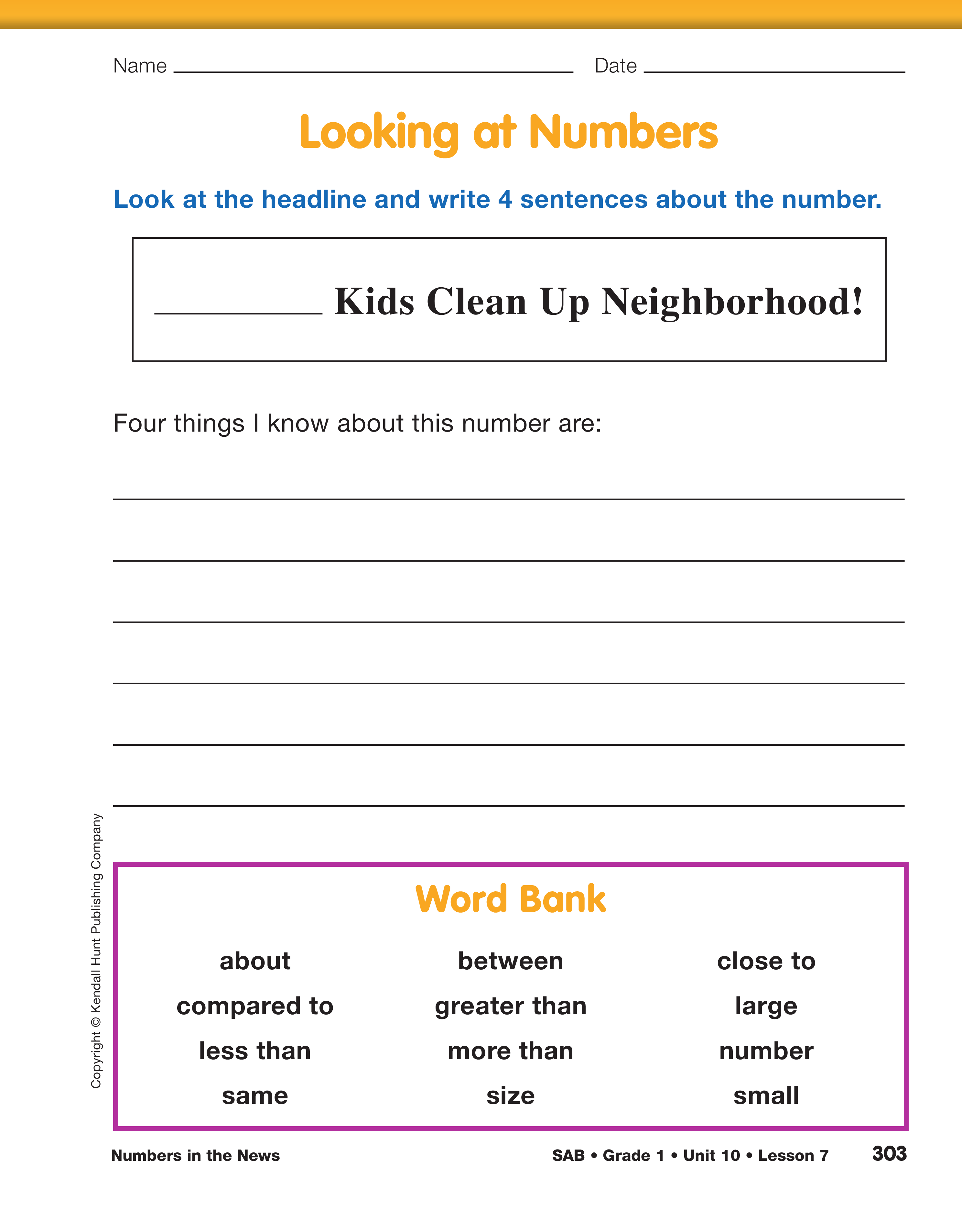Numbers in the News
Est. Class Sessions: 1–2Summarizing the Lesson
Display and direct students' attention to the chart containing comparative statements about a number you prepared prior to the lesson. See Materials Preparation. Ask students to decide whether the statements about the number are true or false. If the statement is true, ask students to explain how they know it is true. If it is false, ask students to change the statement to make it true. Cross out the incorrect statement and rewrite a correct statement in its place. Encourage students to use the 100 Chart or class number line to help them verify their answers.
The following statements are for the number 57:
Assign the Looking at Numbers page in the Student Activity Book. For this assessment, each student will need a two-digit number. You can have all students write in the same number, you can assign different numbers to different students, or you can have each student choose their own number. Have 100 Charts and desk number lines readily available.














